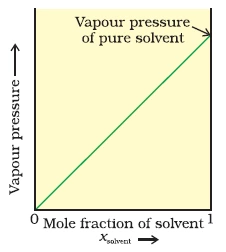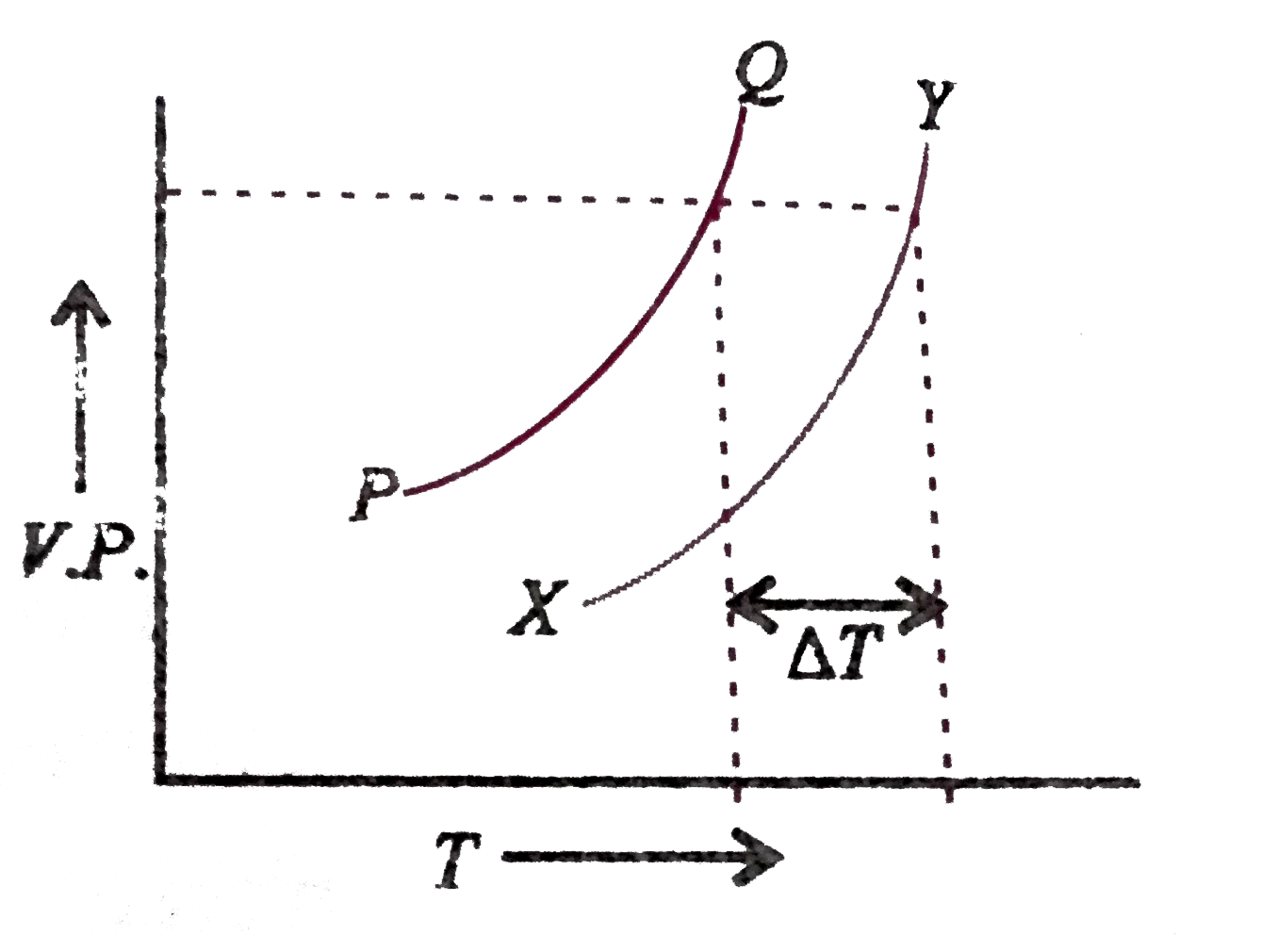Vapour Pressure And Effect Of Temperature
Vapour Pressure
A liquid solution is made by dissolving a solid, liquid or gas in a liquid solvent. Vapour Pressure of liquid solution is characterised as the pressure applied by the vapours on the solvent in equilibrium condition and a specific temperature. It changes with the kind of liquid and temperature. A few properties of the vapour pressure of liquid solutions are as per the following:
- The pure liquid possesses more vapour pressure when contrasted with liquid’s solution.
- Vapour pressure is inversely proportional to attractive intermolecular forces within a liquid.
- Vapour pressure of a liquid increases with a rise in temperature, as molecules obtain kinetic energy and vaporise readily.
The liquid solution can contain volatile solute and solvent also. By and large, the solvent is unstable in nature, and the solute forgot about to be non-unpredictable. Vapour pressure can be assessed in two cases which are:
• Vapour pressure of liquid solutions that have solute and solvent in the liquid stage
• Vapour pressure solid-liquid solutions that have solute in solid-state, and the solvent in the liquid stage
Vapour Pressure of liquid solutions
To determine vapour pressure of the liquid-liquid solution, we will focus on an example of two unstable liquid solutions and will tag their liquid part as A and B. At the point when we place the unstable liquid with their parts in a closed beaker; we find that equilibrium is attained between the liquid state and vapour state.
If Ptotal is the total vapour pressure at an equilibrium state and let PA and PB be the partial vapour pressures of liquid parts A and B separately, including further, the mole fraction of particular liquid parts is XA and XB separately.
Factors Affecting Vapor Pressure of a liquid
1) Nature of the liquid
Every liquid has a specific vapour pressure on the grounds that every liquid has a diverse extent of intermolecular powers.
The liquids, which have more weak intermolecular powers, will in general getaway promptly into vapour stage and in this manner, have a more prominent vapour pressure.
For instance: dimethyl ether and liquor have higher vapour pressure than water at a given temperature due to more vulnerable intermolecular forces in them when contrasted with water.
2) Temperature of liquid
The vapour pressure of liquid increases with a rise in temperature. This is because of the way that with a rise in temperature, more molecules will have higher kinetic energies. Along these lines, many will escape from the liquid surface to the vapour state, bringing about higher vapour pressure.
Raoult’s Law
French Chemist Francois Marte Raoult developed a quantitative connection between partial vapour pressure and mole fraction of volatile liquids. The law expresses that the mole fraction of the solute part is directly proportional to its partial vapour pressure.
Ptotal = PA0 + (PB0 - PA0) xB
Where,
PA à partial pressure of A
PA0 à vapour pressure of pure liquid part A
PB0 à vapour pressure of pure liquid part B
Ptotal à total vapour pressure of the solution placed in a container
XB à mole fraction of liquid part B
Related Videos:
Vapour pressure relation in liquid-liquid solutions
Following conclusions are derived from the liquid-liquid solution connection.
• Total vapour pressure depends on the mole fraction of any of the liquid part that is, either A or B. For Example, the condition can likewise be composed as
Ptotal = PB0 + (PA0 – PB0) XA
• We can plot a linear graph between the total vapour pressure of the solution and mole fraction of any of the liquid part/component.( A or B )
Vapour Pressure of Solid-liquid Solution
The solids in liquid solution comprise of a solid part as the solute and liquid part as the solvent. For instance, when we break up glucose, sugar or salt in water, we get solids in liquids sort of solution. For the most part, the solute is non-volatile and the vapour pressure is not exactly the pure vapour pressure of the solution.
Decrease in Vapour Pressure on Addition of a non-volatile Solute
The decline in vapour pressure on the addition of a non-volatile solid solute to the liquid solvent is because as we know that evaporation is a surface process, the larger the surface, the more prominent is the evaporation and thus more the vapour pressure. In a pure liquid, there is an increased surface area accessible for the particles to vaporise; in this manner, there is an increase in vapour pressure. Then again, when we include a non-volatile solute, the solvent molecules get less surface to get away and henceforth it has low vapour pressure.
• The number of molecules evaporating or escaping from the solution surface is higher in pure liquid solutions in comparison to non-volatile solute in the solvent.
To determine the total vapour pressure of the solid-liquid solution, we take an example of a solution where let us consider A is solvent and B is solute. As per Raoult’s law, we realise that partial vapour pressure of individual part (solute/solvent) is directly related to its mole fraction. Presently, when we include a non-volatile solute, clearly vapour pressure will originate only from the solvent part, as they are the only accessible part in the vapour state. Thus, if PA is the solvent vapour pressure, XA is its mole-fraction and PA0 is the pure solvent vapour pressure, at that point by Raoult’s law, the connection will come out to be:
PA ∝ xA
PA = PA0 xA

With the help of a graph between mole fraction of solvent and vapour pressure, we find its nature to be linear.
Important Chapters:

Similar Questions
Knowledge Check
A mixture of ethyl alcohol and propylalcohol has a vapour pressure of 290 mm at 300 K. The vapour pressure of propylalcohol is 200 mm. If the mole fraction of ehtyl is 0.6, its vapour pressure (in mm) at same temperature will be:
A700B360C350D300The aqueous solution that has the lowest vapour pressure at a given temperature, is
A0.1 M sodium phosphateB0.1 M barium chlorideC0.1 M sodium chlorideD0.1 M glucoseThe vapour pressure at a given temperature of an ideal solution containing 0.2mol of non-volatile solute and 0.8mol of a solvent is 60mm of Hg. The vapour pressure of the pure solvent at the same temperature will be
A150 mm of HgB60mm of HgC75 mm of HgD120 mm of Hg
In the graph plotted between vapour pressure (V.P.) and temperature (T),

View SolutionThe vapour pressure of pure benzene is 22mm and that of pure toluene is 75mm at 20∘C. What is the composition of the solution of these two components that has a vapour pressure of 50mm at this temperature ? What is the composition of vapour in equilibrium with this solution ?
View SolutionSolubility Of A Gas In A Liquid |Effect Of Temperature|Effect Of Pressure|Henry's Law|Questions|Summary
View SolutionThe vapour pressure at a given temperature of an ideal solution containing 0.2mol of non-volatile solute and 0.8mol of a solvent is 60mm of Hg. The vapour pressure of the pure solvent at the same temperature will be
View SolutionStatement-1. Vapour pressure of water is less than 1.013 bar at 373K.
Statement-2. Water boils at 373 K as the vapour pressure at this temperature becomes equal to atmosphere pressure.
View Solution
